Cairns Birdwing (Ornithoptera euphorion)
The Cairns Birdwing Butterfly (Ornithoptera euphorion), also known as the Cairns Birdwing, is one of the largest butterflies in Australia, renowned for its impressive size and striking colours. This species is endemic to the rainforests of north-eastern Australia, particularly the region around Cairns in Queensland.
The females lay their eggs on specific host plants, mainly from the Aristolochia family, which also serve as food sources for the caterpillars. The caterpillars go through several moulting stages, voraciously feeding on the leaves of their host plants.
The Cairns Birdwing Butterfly faces several threats to its survival. Habitat loss due to urban development, land clearing, and deforestation remain of significant concern. Additionally, the introduction of non-native plants, such as the Dutchman’s pipe vine (Aristolochia elegans), has affected the availability of suitable host plants for the butterfly’s caterpillars.
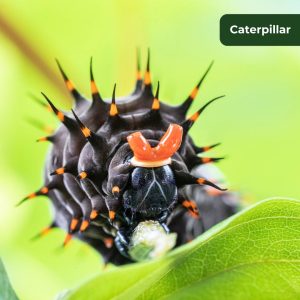 |
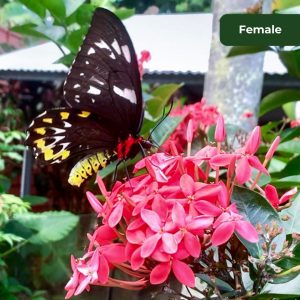 |
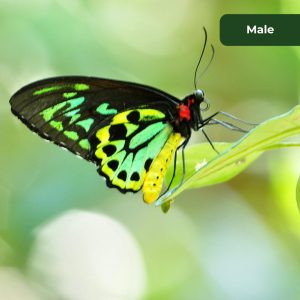 |
|---|
Did you know:
- The Cairns Birdwing caterpillar does not pupate on the vine, check nearby plants for a chrysalis.
- The Aristolochia vine is toxic. However, it is not harmful to the caterpillar. Instead, the caterpillars store the toxins in its orange-red spines. This colouration lets predators know that they are poisonous.
- This vine is also host to two other species of swallowtail butterfly, Big Greasy (Cressida cressida) and Red-bodied Swallowtail (Pachliopta polydorus).
- You can contact your local community garden or Landcare group if you have an abundance of Birdwing caterpillars and not enough Aristolochia acuminata for them to eat. Be sure before moving them that there is no silk, as they may have started the process of pupating. It is best to cut the plant that they are on rather than moving them by hand to minimise distress.
- Aristolochia elegans is an introduced species of vine that is commonly mistaken for Aristolochia acuminata. This South American vine is threatening the Cairns Birdwing survival as it contains a poison that kills the caterpillars.
How to tell the difference between Aristolochia acuminata and Aristolochia elegans
- Both vines have heart shaped leaves. However, Aristolochia acuminata has longer leaves.
- The flower of Aristolochia elegans is bigger and mottled, whereas Aristolochia acuminata is a solid colour.
- If you are purchasing a vine to host butterflies in your garden it is best to stick to botanical names to avoid any confusion with common names.
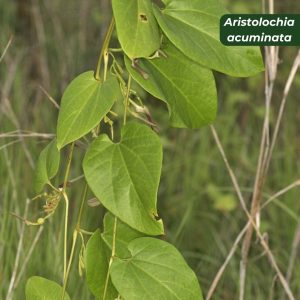 |
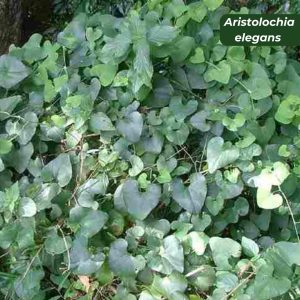 |
|---|
How to care for your vine
- Provide full sun
- Water moderately
- Provide something for the vines to climb up such as a trellis
- Keep your vines close to other plant species so they can host Birdwing eggs and chrysalis’
Want more good Rainforest news in your life?
Subscribe to our eNews | Follow us on Instagram | Like us on Facebook | Subscribe to our YouTube channel
Help Protect Rainforests Forever
Donate to Protect Rainforests Forever | Become a Rainforest Guardian for as little as $2 a month | Partnership Options

